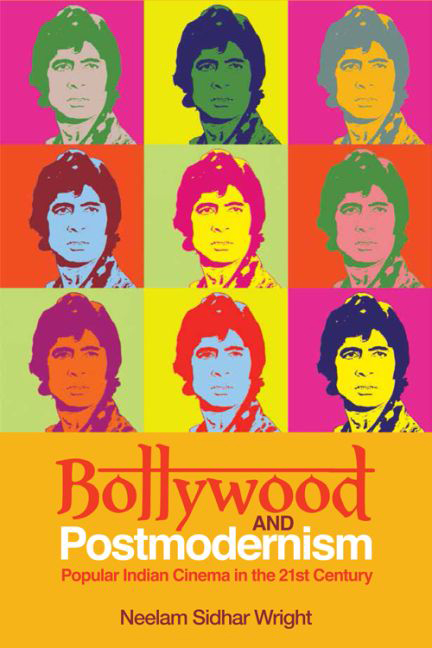Book contents
- Frontmatter
- Contents
- Acknowledgements
- List of Figures
- List of Abbreviations of Film Titles
- 1 Introduction: The Bollywood Eclipse
- 2 Anti-Bollywood: Traditional Modes of Studying Indian Cinema
- 3 Pedagogic Practices and Newer Approaches to Contemporary Bollywood Cinema
- 4 Postmodernism and India
- 5 Postmodern Bollywood
- 6 Indian Cinema: A History of Repetition
- 7 Contemporary Bollywood Remakes
- 8 Conclusion: A Bollywood Renaissance?
- Bibliography
- List of Additional Reading
- Appendix: Popular Indian Film Remakes
- Filmography
- Index
4 - Postmodernism and India
Published online by Cambridge University Press: 12 September 2017
- Frontmatter
- Contents
- Acknowledgements
- List of Figures
- List of Abbreviations of Film Titles
- 1 Introduction: The Bollywood Eclipse
- 2 Anti-Bollywood: Traditional Modes of Studying Indian Cinema
- 3 Pedagogic Practices and Newer Approaches to Contemporary Bollywood Cinema
- 4 Postmodernism and India
- 5 Postmodern Bollywood
- 6 Indian Cinema: A History of Repetition
- 7 Contemporary Bollywood Remakes
- 8 Conclusion: A Bollywood Renaissance?
- Bibliography
- List of Additional Reading
- Appendix: Popular Indian Film Remakes
- Filmography
- Index
Summary
This chapter considers the much-contested concept of postmodernism within a global context by surveying selected critical writing which has previously attempted to relate the concept to both Western and Eastern cinemas. By providing clear definitions of what I mean by ‘postmodern’ (since the concept, in particular, is known to manifest itself in many different and often contradictory ways), I am able to locate and investigate Bollywood's postmodern aesthetics.
INDIA: A POSTMODERN PRESENCE
An investigation into postmodern shifts in contemporary Bollywood is best begun by observing the film industry's geographical site of production. A brief descriptive walk through two of India's most prominent celluloid cities perfectly conjures up a sense of what I mean by a postmodern presence in con-temporary Indian culture (or more precisely, contemporary Indian cinema). In today's Delhi, one can alight from an air-conditioned electric sky-train, walk through an expansive, immaculate, cavernous silvery brushed-steel station (equipped with all the latest computer-generated digital communication technology), only to find oneself suddenly thrown back into the Third World at the station exit. Standing at the entrance to Delhi's state-of-the-art Chawri Bazaar railway station is enough to confound one's sense of place and time. Above ground, within a few metres, hundreds of ragged street-merchants, bullock carts and rickshaw-wallahs stampede under a sky of thick smog, soiled shop signs and tangled electricity cables. All of these tenaciously encircle the shiny new metro station - ironically one of the Government of India's latest development ventures to modernise the city through its transport system. Delhi's cityscape reveals a similar paradox. A vast concrete flyover stretching across the city seems somewhat dwarfed under the towering 175-foot-tall statue of Hanuman, the Hindu monkey god, whose figure looms over the city from every direction. Similarly, in Mumbai, the city's ever-evolving dystopian skyline offers a cacophony of shanty towns and derelict buildings squashed in alongside endless gleaming glass skyscrapers and designer shopping malls - a constant architectural battleground for tradition versus modernisation, the past versus the future. In this city, where Italian sports cars give way to the stray cows that nestle in the central reservations of dual carriageways, the past, present and future seem to coexist with an air of indifference. The poverty-stricken sleep peacefully in television boxes, whilst across the road, the wealthy middle classes purchase their latest collection of one-lakh designer saris.
- Type
- Chapter
- Information
- Bollywood and PostmodernismPopular Indian Cinema in the 21st Century, pp. 63 - 78Publisher: Edinburgh University PressPrint publication year: 2015



